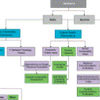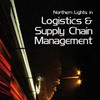 There hasn’t been a proper literature review on my blog for a while, but this post will put it right again, hopefully. Moreover, there hasn’t been a post on transportation for a while either, and this post will put that right, too. The other day I came across Transportation security and the role of resilience: A foundation for operational metrics, a recent article by Andrew Cox, Fynnwin Prager and Adam Rose that presents a framework for evaluating transportation resilience, including the important role of perceptions in potentially amplifying security risks. With transportation being a major part of any supply chain this article also presents a framework for evaluating supply chain security and resilience. Based on the July 2005 terrorist attacks in London this paper not only develops a predictive resilience measures but also describes various strategies at the macro, micro and meso level.
There hasn’t been a proper literature review on my blog for a while, but this post will put it right again, hopefully. Moreover, there hasn’t been a post on transportation for a while either, and this post will put that right, too. The other day I came across Transportation security and the role of resilience: A foundation for operational metrics, a recent article by Andrew Cox, Fynnwin Prager and Adam Rose that presents a framework for evaluating transportation resilience, including the important role of perceptions in potentially amplifying security risks. With transportation being a major part of any supply chain this article also presents a framework for evaluating supply chain security and resilience. Based on the July 2005 terrorist attacks in London this paper not only develops a predictive resilience measures but also describes various strategies at the macro, micro and meso level.
Resilience Taxonomy
What I found most interesting in this paper is the taxonomy of resilience measures they present. This framework is both simple and complex at the same time, but in my opinion it fully conveys what goes into resilience, and is very much based on Holling (2001), who proposed that resilience is related to three overarching concepts: 1) the vulnerability to unpredicatble shocks, 2) the resources or wealth available to a system to help it change, and 3) the internal controllability of relationships in a system, i.e. its rigidity or flexibility. Resilience has both a static and a dynamic side. The static side (A) is made up of the system vulnerability (1), while the system flexibility (2) makes the dynamic side (B). System wealth or system redundancy (3) sits in the middle. The underlying indices supporting these three work at three levels: macro (a), meso (b) and micro (c):

While the taxonomy above bears the hallmark of the US Transportation Security Administration, I have been unable to find it anywhere on their homepage or any of their online publications. Maybe my readers can help?
Transportation system resilience strategies
The article also list some possible strategies for achieving transportation systems resielience, taken from theWiley Handbook of Science and Technology for Homeland Security:
Conservation is maintaining service with fewer inputs (e.g., railroad cars, employees) on the supply side or doing with less transportation on the demand side.
Input substitution is shifting input combinations or transportation modes to achieve the same function or level of productivity
Inventories include both emergency stockpiles and ordinary working supplies of production inputs for both the transportation system and for economic activities dependent on transportation.
Excess capacity refers to idle plant and equipment. A special case is redundancy that refers to back-up systems that do not increase productive capacity, but rather compensate for damaged capital (e.g., multiple tracks).
Relocation is changing the site of business activity in terms of travel routes or end-user sites.
Resource unimportance refers to the portion of business operation that can continue without a critical input like transportation.
Import substitution is importing resources from other regions. This might be imports for the transportation system itself or the employment of the transportation system in doing so.
Export substitution refers to selling goods to other regions that cannot be sold otherwise to local customers.
Technological change allows for easier manipulation to restore function, to increase production, change hours of operation, and to respond to altered service demands.
Production recapture refers to working overtime or extra shifts to catch up on lost production or service.
Logistics refinement refers to reducing impediments to the delivery of goods and services.
Removing operating impediments involves debris removal and related complications, and streamlining paperwork for insurance claims and government assistance.
Management effectiveness refers to skills that promote restoration, repair and reconstruction.
Speeding restoration refers to a range of options such as alternative means of access to repair sites and incentive contracts.
Input substitution, import substitution, inventories, as above, also speed restoration, but pertain to materials and labor needed for repair activities rather than normal production operations.
Many, but not all of thes strategies can be found in the resilience taxonomy above.
Resilience metrics
The authors provide a crude mathematical definition of resilience.
Adapting an established definition, direct static economic resilience (DSER) refers to the level of the individual firm or industry, and can be operationalized as the extent to which the estimated direct output reduction deviates from the likely maximum potential reduction given an external shock:
DSER = (%ΔDYm – %ΔDY) / (%ΔDYm)
where, %ΔDYm is the maximum percent change in direct output, %ΔDY is the estimated percent change in direct outputIn essence DSER is the percentage avoidance of the maximum economic disruption that a particular shock could bring about. The above can readily be adapted to transportation resilience in the narrow sense by reinterpreting the economic output changes as transportation journey changes.
On a side note, this definition of resilience stems from the previous work of Adam Rose, whose work has been presented on this blog almost three years ago, when I posted an srticle on how to define and measure economic resilience. While used to define transportation resilience in the article above, I do believe that this could be readily adapted to supply chain resilience as well.
UK Transport Network Resilience
For comparison I suggest to look at a report on the network resilience and adaptation of the transportation network in the UK, using completely different metrics. Interestingly, some of the metrics used there stem from some of my own earlier research on transportation reliability and vulnerability, and which I thought that no one would ever use.
Reference
Cox, A., Prager, F., & Rose, A. (2011). Transportation security and the role of resilience: A foundation for operational metrics Transport Policy, 18 (2), 307-317 DOI: 10.1016/j.tranpol.2010.09.004
Author links
- linkedin.com: Andrew Cox
- linkedin.com: Fynnwin Prager
- usc.edu: Adam Rose
Related posts
- husdal.com: Network Resilience and adaptation











